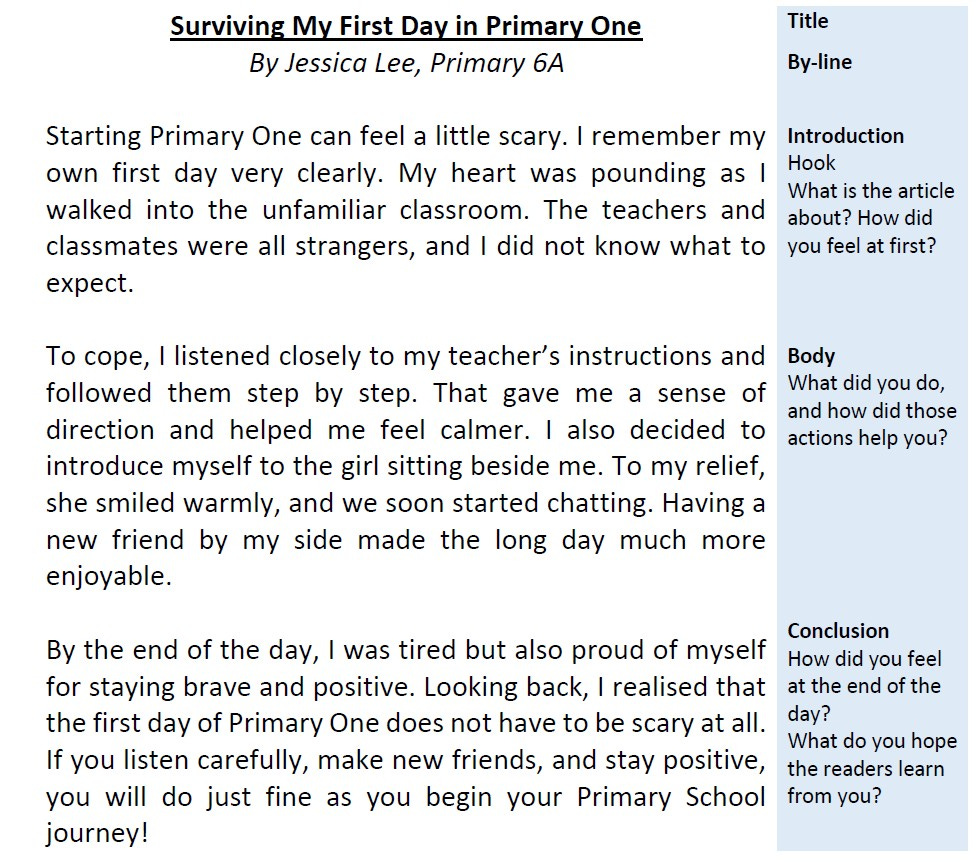Writing an Article for PSLE Situational Writing
Articles are actually everywhere! Open a newspaper or magazine, and you will see articles. What you are reading now is a blog article! When you look closely, you will notice that all articles share certain similarities.
The PSLE Specimen Paper for the new examination syllabus featured article writing in the situational writing component. If you are preparing for it, that is wise! You should gain sufficient knowledge of how to write an article.
Let us first understand what an article is.
What is an article?
An article is a piece of writing meant to inform, describe, or share personal experiences or opinions. It is usually written for a school magazine, newsletter, or website.
Types of Articles You May Be Asked to Write
✍🏼 Recount Article
Share a personal experience e.g. “My Weekend as a Pet-Sitter”
🤔 Reflective Article
Show what you’ve learnt e.g. “What I Learnt from Helping at a Charity Fair”
📘Informative Article
Describe something or someone e.g. “How to Stay Healthy During Examination Season”
🎉Celebratory/Topical Article
Linked to special days or school events e.g. “Exploring Different Cuisines on Racial Harmony Day”
Key Features of an Article
Title: Catchy and relevant to the topic
By-line: Writer’s name (& class/role)
Introduction: Hooks the reader & explains what the article is about
Body Paragraphs: Organised into clear points with details and examples
Conclusion: Ends with a reflection, recommendation, or call to action
Knowing the key features of an article helps, does it not?
Next, let us take a look at the writing style of an article.
How Should You Write an Article?
When writing one, make sure that you use clear and concise sentences. Generally, you want to try and keep each sentence to a maximum of two ideas. Any more than that and you might risk writing run-on sentences.
When required by the question, you may have to include personal reflections in your writing, especially if you are sharing your experience. You should share your meaningful insights and thoughts that arise from your experience.
Next, use linking words like “besides that” and “therefore” to ensure a proper flow of ideas, with clear transitions between sentences.
Where possible, include vivid vocabulary to keep your readers engaged. It would be a plus if you could include words that are thematically linked to the topic you are writing about.
Knowing all of these, you are off to an advantageous start!
Mind-Stretching Example
Here is an example of an article. Study it carefully so that you know how to write each paragraph well!
A quick summary of the task:
Purpose: To encourage Primary 1 students and show them that the start of their Primary School journey is not scary.
Context: A school magazine article written by an older student.
Audience: Primary 1 students and maybe teachers/parents



